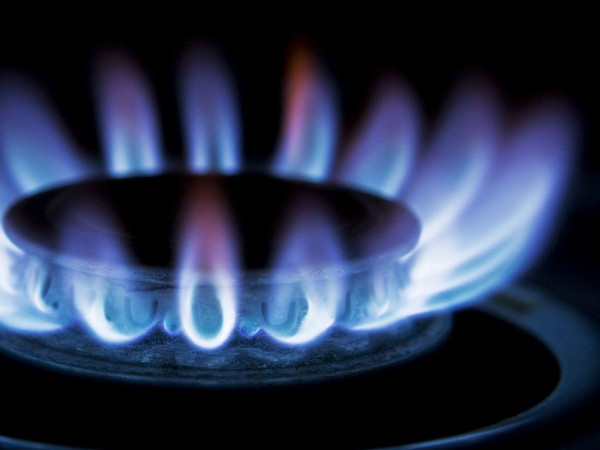“People have been producing biogas for fuel for centuries. The Assyrians, for example, apparently used it to heat their baths in the 10th century BC.” – Sujata Gupta, New Scientist
Contents
What is biogas?
Biogas is mostly methane (around 60%) with carbon dioxide (around 40%) and a little hydrogen and hydrogen sulphide. It’s made by anaerobic bacteria breaking down organic matter in the absence of oxygen (e.g. underwater). The process also occurs in landfill sites, and in the digestive system of humans and other animals (yes, farts are biogas).
Biogas is generated naturally in the mud at the bottom of marshes – it’s called marsh gas, and can cause little ‘will-o-the-wisp’ flames over the water, due to biogas igniting spontaneously and lighting the methane.

But we can make it ourselves from plant and animal wastes, and even human waste; soft material is better than twigs / woody material. Biogas can be burnt to drive a generator, or on a smaller scale, for cooking or lighting gas lamps. Biogas can also be used to fuel vehicles.
The equipment in which the organic matter breaks down anaerobically is called an anaerobic digestion system, which includes storage for the gas produced. Raw biogas can be ‘scrubbed’ by passing it through slaked lime, which removes most of the CO2 and increases its calorific value.

The two main types of digesters are the continuous and the batch. Continuous digesters have a constant throughput of material, and batch digesters extract the gas from a contained batch of material, which is then emptied and a new batch added.
Biogas digesters are already widely used in developing countries, especially India and China, as firewood for cooking becomes scarce. There are millions of small family plants in India and China. In the West, digesters tend to be larger-scale, taking animal slurries, food waste and human sewage. But they can be domestic-scale too, for individuals looking to reduce their dependency on fossil fuels.
What are the benefits of biogas?
Reduces CO2 emissions
Because it’s a substitute for natural gas. Because CO2 from biogas is from recently-alive plant matter (even if it was fed to animals), it’s part of a cycle – i.e. CO2 given off by burning biogas is absorbed by plants that will provide future biogas, and so on.
Reduces methane emissions
Animal agriculture is responsible for around 36% of methane released into the atmosphere by human activity. When methane is burnt it releases CO2, but methane is around 30 times more potent as a greenhouse gas than CO2, so it’s a good idea to capture and burn it rather than release it. It’s better for organic waste to be separated and put into an anaerobic digester instead of collecting methane from landfill sites, as nutrients are lost in toxic leachate.

Reduces resource use
Producing and using biogas locally means that we don’t need millions of miles of pipes to deliver it, and it doesn’t need to be liquefied and shipped across the world, with all the resources and energy that these things entail. Plus it saves trees (for firewood). Natural gas is finite, so won’t last forever – and there will probably be wars for it as it runs out.
Creates two renewable resources
Sewage sludge and animal slurries usually end up as fertiliser anyway, so it’s better to obtain fuel from it first, and prevent runoff and methane emissions at the same time – and you still get fertiliser at the end of the process. It’s the missing link for those wanting to switch from fossil fuels – many people heat their homes with wood and their water with solar, and get their electricity from wind and solar – but cooking is a problem; it’s too expensive with electricity, and Agas are expensive too, plus they take a long time to get up to temperature, and will make your space too hot in the summer. Gas is best for cooking, but with biogas it can be done without gas bills.
NB: as with other biofuels, we think that the feedstock (raw materials) should be waste material. We don’t think it’s a good idea to set aside large areas of land for growing fuels when much of the world doesn’t have enough food (although the waste from food crops is fine). Also, large-scale digesters need to be fed by large operations like factory farms or sewage plants. These bring their own problems, such as hormones, animal cruelty, and energy-intensive transport and chemicals. We think that the best solution is usually the smallest scale possible – in this case the farm, community or domestic scale.

What can I do?
Setting up
Batch digesters based on some kind of drum / container are feasible on the domestic scale. Continuous digesters are popular in Asia – an inlet and outlet pit with a concrete or steel gas container. You can build your own – see our resources for books, links and courses.
Sizing
In India, for a family of 8 with a few animals (say 8-10 cows), a 10m³ digester is recommended, with 2m³ gas storage. But a typical small family digester will be around one cubic metre. For cooking and lighting, you don’t need much. Every kg of biodegradable material will yield around 150 litres of gas, and gas lights need around 100l per hour. 2 gas rings for a couple of hours a day will use between 1-2 m³, so if you have some livestock, plus kitchen and human waste, you can do this easily. When it comes to driving any kind of engine (e.g. a generator or a pump) it’s a different matter, and is way beyond the domestic-scale. The average amount of time that material stays in the digester before emptying is around one month, and in fact the minimum by law in the UK is 28 days.

What we’re not supporting is the building of gigantic digesters to take huge amounts of maize, grown specially to feed the digesters. See here and here for more on this. This doesn’t mean that big biogas is a bad idea. Small digesters will never manage the sheer volume of waste produced in cities. However, small and large digesters can work together in a complementary way, with small digesters helping promote the technology, support behaviour change and demonstrate localised benefits while large digesters can cope with the volumes produced on a daily basis in dense urban areas. There are a number of large digesters taking food waste from cities. In Malmo, Sweden, this happens in a very coordinated way with municipalities using the biogas upgraded to biiomethane to run their buses while nearby farmers benefit from the fertiliser produced.

Use
The waste input must be a slurry – so add water if it’s too solid. Anaerobic microbes operate at 3 temperature ranges, the most common being mesophilic – around 37-42 ºC. In hot climates, digesters can operate at ambient temperatures while in colder countries the digester will need insulation and heating (which could be provided by biogas) If the digester is well insulated, the parasitic load (the amount of energy used to run the system) will be between 15-30%. A greenhouse is a good place for it.

Regulations
In the UK, the Environment Agency has several exemptions that enable micro AD to be operated without a permit. These free exemptions area easy to apply for as long as the plant and use of digestate fall into certain criteria. Where feedstock contains animal by-products the process to get AD plants approved is fairly lengthy and rigorous with some cost attached. However, non-commercial plants are not mentioned. Also, these regulations vary from country to country (even within the UK) so if in doubt, check with your local regulators.
Safety
Methane is explosive – see Adelaide University’s website for safety considerations.
Specialist(s)
The specialist(s) below will respond to queries on this topic. Please comment in the box at the bottom of the page.

Rokiah Yaman co-founded LEAP Micro AD to develop advanced anaerobic digestion technology as part of a decentralised, circular, food-waste-energy model designed to support local employment and training opportunities, manage organic resources sustainably, engage people around zero waste and strengthen community resilience.



7 Comments
superb article . -Methane will not spontaneously ignite . it requires an air temperature of 537C to ignite it but marsh gas often ignites forming flames over the water called will of the wisps this ignition is due to bacterially produced diphosphine gas P2H4 present with the methane igniting spontaneously which fires the methane present . .So with marsh gas we may not need an igniter!!!!
This is a great article, with its many illustrations and very practical accent on small biogas plants. Really great.
However, what intrigues me is the statement: “we think that the feedstock (raw materials) should be waste material. We don’t think it’s a good idea to set aside large areas of land for growing fuels when much of the world doesn’t have enough food…”
I agree that the feedstock (raw materials) should be waste material: It’s just that I don’t understand why using crops to produce biogas is so much criticised when let’s not forget the huge quantities of food crops go every day to the production of alcoholic drinks, for example. If society was really concerned to alleviate hunger, and going to look to maximise food production, wouldn’t there be at least some criticism on this basis when a new distillery, for example, is planned?
With the legalisation of cannabis in Canada, once again land which could have grown food will now presumably be used to grow a non-food crop, the cannabis crop…
Yes, I think you could be right. However, I suppose that a) beer, at least, has nutritional value; and b) the sheer amount of fuels used, especially road fuels, makes that issue a bigger problem than alcoholic drinks.
As the population grows towards 11 billion, either we’ll have to destroy more natural habitat for farmland, or we’ll have to try to get more food from the same amount of land with pesticides and fertilisers – a recipe for biodiversity loss and soil erosion – not a good idea. With fewer of us, we’d all be able to have a drink with a clear conscience. Global population is projected to fall after it peaks around 11 billion towards the end of this century (the last time I read about it), but that problem is going to get worse before (and if) it gets better.
I don’t think cannabis poses the same problem really, and certainly not on the same scale, because of the small quantities used. I guess most demand could be satisfied from indoor pot plants (no pun intended), greenhouses and conservatories.
Wow you guys, what a mine of info. we are making a ultra low, up cycled, bio diversity venue next to the 150 acre woodland at Wolford Wood, your site has helped me confirm we are doing things correctly but explained things so simply like bio-gas that new ideas for heat and light come into play.
You don’t address designing human sewage septic tanks to produce bio-gas methane. Are there issues with that ?
Thanks sir! Am new to biogas technology but I will like to grow more on this biogas.
Because I so much love innovations. please sir, I need your advice and help to build up my knowledge on biogas technology.
Please sir, the gas storage drum inside the empty drum upside down with water inside the same empty drum.
My question is this: why putting water inside the empty drum. Explain sir.